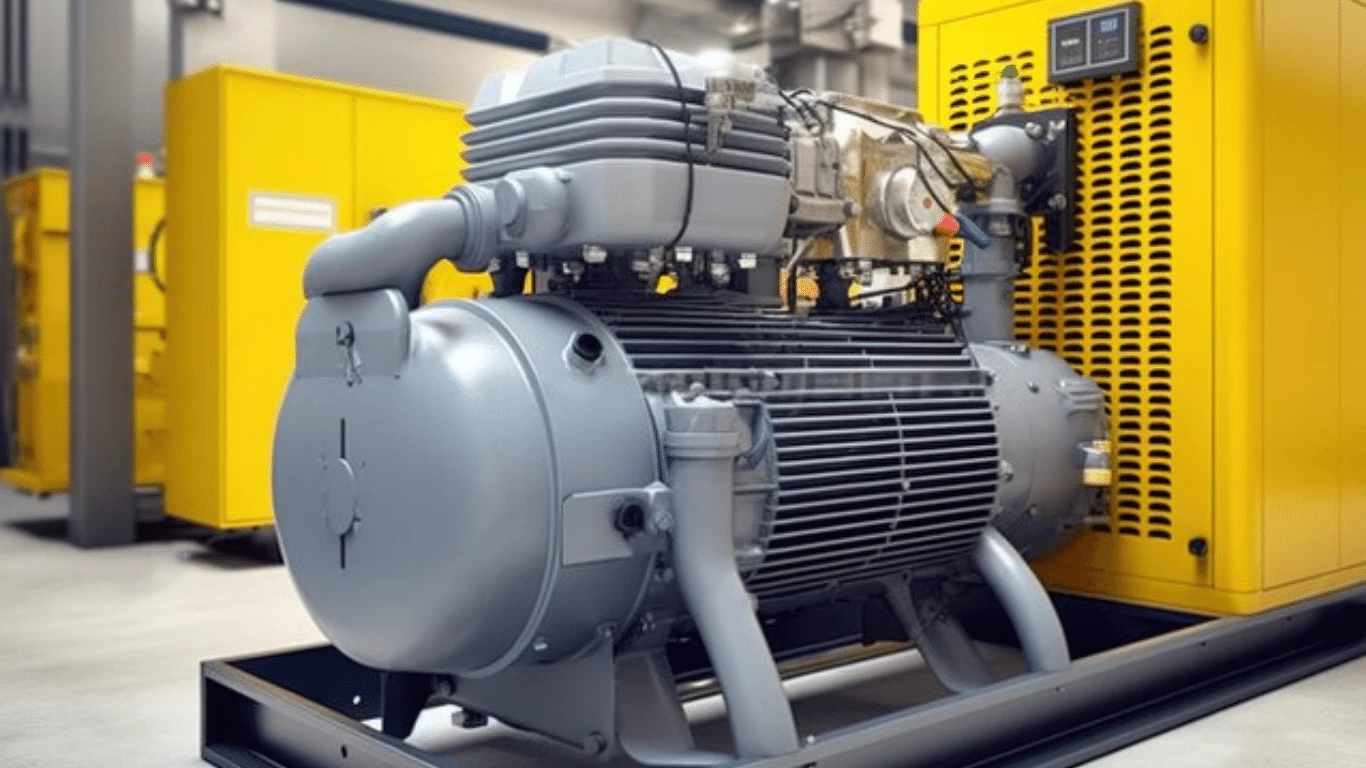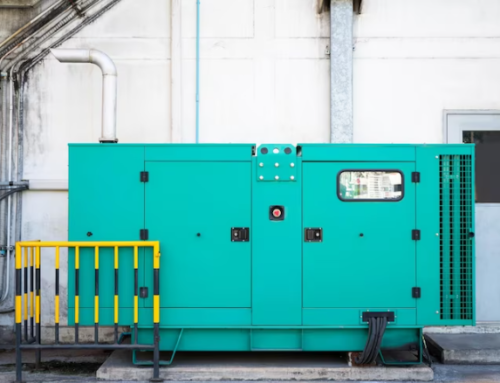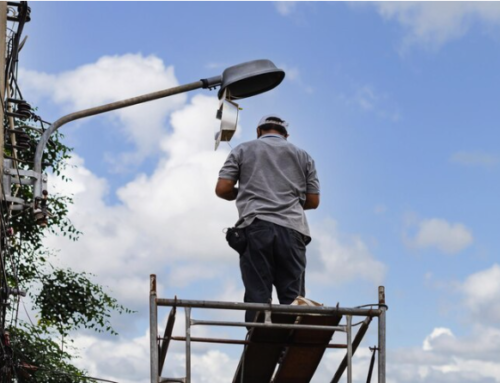Picture this: it’s 2:17 p.m. on a warm weekday. Office phones are ringing, espresso machines are hissing, and air conditioners are humming away. Then—without warning—the lights flicker once, twice… and the world goes dark.
At first, there’s confusion. The buzz of fluorescent lights disappears. The hum of ventilation fades. Streetlights go blank, computer monitors blink out, and suddenly, the noise of modern life—the constant low-frequency hum we never notice—is gone.
The silence is startling.
And that’s when you really understand how much electricity sounds like life itself.
But within seconds, in the basements of certain buildings, something else stirs. A low rumble. A mechanical heartbeat. The commercial generators wake up.
Let’s take a look inside that silent world—how city blocks survive blackouts, what systems depend on those generators, and what happens when the lights don’t come back quickly enough.
How Do Commercial Generators Keep an Entire City Block Running During a Blackout?
When the grid goes down, a commercial generator becomes the unsung hero of the city block. These machines don’t just keep one light bulb on—they keep businesses alive.
1. The Instant Response
Modern commercial generators are designed for speed. Within seconds of detecting a power loss, they kick on automatically through a transfer switch system. This switch senses the outage and shifts the power load from the city grid to the generator’s supply.
That means:
- Grocery store freezers stay cold.
- Elevators don’t trap passengers.
- Security systems keep running.
- Hospitals and data centers don’t lose critical functions.
2. The Scale of Power
These aren’t your backyard portable generators. Commercial-grade models can power entire office towers, hotels, or multiple retail spaces. They run on diesel, natural gas, or propane, with engine sizes that rival small truck motors.
Think of them as the muscle behind the heartbeat of a block. While residents above might be lighting candles, businesses below are still operating—thanks to a carefully engineered power backup system humming steadily in the shadows.
3. The Smart Grid Connection
Today’s generators often connect to building automation systems. They don’t just turn on—they communicate. They balance loads, monitor fuel levels, and even report maintenance needs automatically.
In short, when a blackout hits, commercial generators are like conductors in a symphony of backup power—keeping the city’s rhythm going even when the main power orchestra goes silent.
What Systems are Most Affected When Power Goes Out in a Commercial Area?
A single outage can ripple through a city block faster than most people realize. In a commercial zone, power isn’t just about lighting; it’s about logistics, safety, and communication.
When the lights go out, here’s what’s most vulnerable:
1. Security and Safety Systems
- Cameras and alarms immediately lose power, leaving buildings blind and vulnerable.
- Electronic locks and access systems can fail, trapping or locking out employees.
- Emergency lighting only lasts as long as the batteries, typically under 90 minutes.
Without generators, security becomes one of the first casualties of a blackout.
2. Data and Communication Networks
Servers, routers, and communication systems are delicate. Even brief interruptions can corrupt files, crash systems, or disrupt critical operations for banks, offices, and IT firms.
Businesses that rely on online transactions or cloud connectivity can lose thousands of dollars in minutes. For that reason, data centers and financial institutions invest heavily in redundant generator systems, because for them, downtime isn’t an inconvenience, it’s a threat.
3. Environmental Controls
Heating, cooling, and ventilation stop instantly during a power loss. In summer, commercial buildings can rise to uncomfortable temperatures within hours. In winter, pipes can freeze.
And for industries like restaurants, laboratories, or medical offices, even brief temperature fluctuations can spell disaster for food safety, equipment, or materials.
4. Transportation and Infrastructure
When commercial power goes out, parking garages lose lighting and gate access. Traffic signals may fail, causing gridlock outside. Even electric public transport can stall mid-route.
That’s why backup generators aren’t just for convenience—they’re part of a city’s safety net.
How Long Can a City Block Rely on Backup Generators During a Power Outage?
The hum of a generator feels like a lifeline during a blackout—but it’s not meant to last forever. How long a block can rely on that lifeline depends on fuel, maintenance, and planning.
1. Fuel Supply: The Clock Starts Ticking
Most commercial generators can run anywhere from 8 to 48 hours on a full tank, depending on their load and size. After that, fuel delivery becomes crucial.
- Diesel systems rely on physical refueling, which can be delayed if roads are blocked or demand surges.
- Natural gas systems can run much longer, drawing directly from the municipal line, assuming the gas infrastructure stays intact.=
2. Load Management: Less Is More
During extended outages, building managers often have to make tough calls. Not every system can stay powered. Essential loads like lighting, security, refrigeration, and communications take priority, while decorative lighting or secondary systems get shut down.
This “power triage” ensures the generator can keep operating longer without straining capacity.
3. Maintenance and Heat Management
Generators aren’t designed to run indefinitely. Over time, heat buildup, oil breakdown, and vibration take their toll. Without proper maintenance intervals, performance can degrade quickly.
That’s why commercial generators undergo regular load testing, so when the moment comes, they can run for days without skipping a beat.
4. Coordination Between Buildings
In some urban areas, multiple generators across a city block are networked to balance demand. Think of it as a mini power grid within the blackout zone—each building sharing responsibility to sustain the block’s collective power needs.
It’s a quiet, coordinated dance of engineering that keeps critical operations running while the rest of the city sits in the dark.
What Happens to Essential Services When Commercial Power Fails Across Multiple Buildings?
When the outage spreads beyond one block—say, an entire downtown section—the situation becomes a test of infrastructure resilience.
Here’s how different services respond when widespread commercial power fails:
1. Hospitals and Medical Centers
Hospitals are built like fortresses when it comes to power protection. Most have tiered backup systems—primary generators for life-support and operating rooms, plus secondary systems for climate control and administrative areas.
But even they have limits. Extended outages strain fuel reserves and staff endurance, and coordination with city utilities becomes critical.
2. Grocery Stores and Restaurants
Without power, refrigeration becomes a race against time. Commercial kitchens and food chains rely on generators to keep perishables safe. When outages drag on, supply chains slow, and food waste spikes.
3. Banks and Data Facilities
These institutions can’t afford even a second of downtime. Backup generators and battery systems keep servers running, but long outages can still disrupt online transactions and ATMs across an entire city district.
4. Emergency Services
Police, fire departments, and city response centers depend on constant power. When grid-wide failures occur, emergency generators kick in—but coordinating across multiple powered and unpowered zones becomes a logistical puzzle.
Even traffic management suffers, as dark intersections increase accident risks and emergency response times lengthen.
5. Residential Spillover
When commercial areas lose power, it doesn’t just affect businesses—it affects nearby neighborhoods, too. Gas stations can’t pump fuel, ATMs go offline, and grocery stores can’t restock essentials.
That’s why backup power in business districts often doubles as a stabilizer for the entire local community.
The Quiet Heroes Beneath the Streets
Most people never see or hear them—these massive, humming machines tucked away in basements or behind concrete barriers. Yet when the grid goes down, they’re the ones holding civilization together.
Commercial generators don’t just power lights; they preserve safety, data, and livelihoods. In a blackout, they become the voice of the city itself—steady, low, and reassuring in a moment of silence.
And while they can’t prevent the storm, they can make sure life keeps moving, even when everything else stops.
Keep Your Business (and Block) Powered with Starnes Electric LLC
At Starnes Electric LLC, we understand that when the lights go out, every second counts. Whether you manage a single business or an entire city block, our team specializes in commercial generator installation, maintenance, and power solutions designed to keep your operations running smoothly—even when the grid fails.
From load testing to automatic transfer systems, we build reliability from the ground up—because power interruptions shouldn’t mean business interruptions.
Don’t wait for the next blackout to think about backup. Let’s make sure your building and your block never goes silent.





